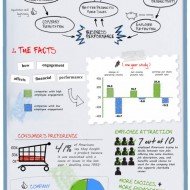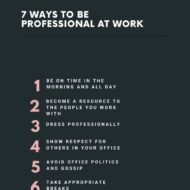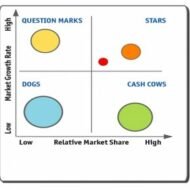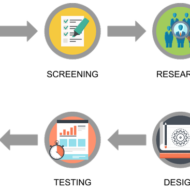Posted by Managementguru in Business Management, CSR, Entrepreneurship, Human Resource, Leadership, Strategy
on Dec 4th, 2014 | 0 comments

What it takes to be a Leader What is #Corporate Social Responsibility? High performance is generally measured against key business imperatives including #competitive advantage, #sales, #talent management, #operational efficiency, #return on investment and profitability. It is no longer adequate for a corporation to revel in economic prosperity in isolation from those agents impacted by its actions. Today, a new element of leadership is making an intense difference in weighing business performance: Corporate Social Responsibility. The late 1990s and the early 2000s saw an uptake in businesses giving proceeds or providing volunteers to causes related to their brands. Some called it “corporate social responsibility”; others called it “corporate #philanthropy” or “#corporate citizenship.” Regardless of its title, it was a way for business to increase visibility while raising funds for good. The spotlight is on both increasing the firm’s bottom line and being a good corporate citizen. Keeping abreast of global trends and remaining committed to financial obligations to deliver both private and public benefits have compelled organizations to restructure their frameworks, rules, and business models. Where does the roots of CSR lie? Although the #roots of CSR lie in altruistic activities (such as donations, charity, relief work, etc.) of corporations, globally, the concept of CSR has evolved and now embraces all allied concepts such as triple bottom line, corporate citizenship, philanthropy, #strategic philanthropy, #shared value, #corporate sustainability and business responsibility. You might be wondering what is “Triple bottom line?” (abbreviated as TBL or 3BL) – The term coined by John Elkington in 1994, incorporates the notion of sustainability into business decisions. The TBL is an #accounting framework with three dimensions: social, environmental (or ecological) and financial. “A plethora of research points to a majority of stakeholders agreeing that CSR is a ‘must do’,” and 67% of consumers say they are more likely to buy products and services from a company if they know it supported good causes. Smart Corporations: As a key component in business #strategy and execution, CSR is playing a crucial role in helping organizations to be seen as leaders. Smart corporations are allocating increasing internal resources to CSR investments that include clear objectives and furnish measurable social outcomes. India is a country of multitude contradictions. On the one hand, it has grown to be one of the major economies in the world, and an increasingly important player in the emerging global order, on the other hand, it is still home to the largest number of people living in absolute poverty (even if the proportion of poor people has decreased) and the largest number of malnourished children. This is the sad state of uneven distribution of the benefits of growth which many believe, is the root cause of social unrest. Companies too have been the target of those disconcerted by this lop-sided development and as a result, their contributions to society are under severe scrutiny. Many companies have been astute to sense this development, and have responded proactively while others have done so only when advocated. What it takes to be a Leader-2...

Posted by Managementguru in Business Management, Human Resource, Organisational behaviour, Principles of Management, Training & Development
on Mar 18th, 2014 | 0 comments

Self Appraisal-Amuse Yourself What is Self Appraisal: Self evaluation process involved in determining the level of self efficacy . By and large, corporate companies go for a one tier system of appraisal-where the supervisor generates a confidential report about his subordinates as and when required. This serves as a basis for the management to decide on increments or promotion for the respective candidate. But the question is, is this system fool proof? Definitely not. There are certain lapses that deserve mention and the management has to design suitable appraisal formats to improve or strengthen the weak areas. Purple Minimalist We Are Hiring Project Manager Poster by managementguru.net Some areas where the appraisal process can take a deviation: A biased report given by the appraiser due to various reasonsPerception of appraiser may be wrongThe appraiser sees the appraisee through his ideas and not from the management’s view point, which may lead to clash of ideas where the appraisee is made the victimFlaws in the design of the appraisal process where the top management may not come to know the real need of the appraiseeAppraisees sometimes don’t identify themselves with the organization and its objectivesAppraisees may not know what kind of behavior traits is expected of them by the management So it is imperative on the part of the management to introduce self appraisal process in its agenda, where the appraisee himself becomes the appraiser. This helps the organization to accomplish its overall objectives in a short time through a high performance system. This kind of appraisal by ‘oneself’ makes each and every employee to clearly understand where he stands against the expected scale of behavior. 7 ways to be professional at work Two-tier system as we may call it will help in the following manner: Participative approach infuses a sense of belongingness amongst the workforcePotential of the appraisee can be brought outThe real problem of the employees is knownHigher level of approach or interest to know or evaluate one’s own behavior is seen. Basically, organizations must examine their assumptions about human behavior and come to a common belief about people. If they believe people are basically “bad” management might go for hiring “watch-out-look-out” supervisors, rigid disciplinary regulations, and separate facilities such as parking, dining and rest rooms. All these clearly spell out the existence of distinction between the management and workforce. If the organization comes to a common agreement that people are basically “good”, entirely the approach will be different. Every worker becomes a manager and uniform treatment is given to both the employees and managers of higher cadre. Essentially in my opinion, no organization or work society will succeed without visionaries and uniform treatment that is consistent with basic principles and ethics. It has to be understood that work attitudes and values are ultimately a company’s best competitive advantage. Note: Larsen & Toubro – Engineering major Larsen & Toubro has developed a competency matrix which lists 73 competencies-that vary across managerial levels-to measure performance and gauge developmental needs of its employees. National Panasonic – The Japanese white-goods major has developed a performance-assessment system driven by Key Result Areas (KRAs). KRAs describe performance goals-business, functional, and behavioural ones-with defined time-frames and are decided jointly by the employee and his manager at the beginning of the...

Posted by Managementguru in Business Management, Marketing, Principles of Management, Strategy
on Mar 4th, 2014 | 0 comments

Product Modification – Solid Strategy to Capture Untouched Market Segments There is a pressing need for business firms to bring about changes in the physical attributes of their existing products periodically, to retain the customer base as well as to tide over the competition in the market. A number of factors may prompt the manufacturer to modify his product. To make best use of the technological advancement for the benefit of the firm Modification in lieu of competition To regenerate a product suffering from sales decline Product Attributes: What could be modified; it may be anything, the color, size, material, functional features, styling and engineering, etc., or a combination of these could be considered for modification. Ultimately these modifications should result in products emerging with better quality, features and styling. Consumer goods are offered with a wide range and variety to appease the different taste of the consumers as well as to stand unique in the market; Bathing soaps, talcum powders and cosmetics to name a few. Even producers, who are involved in core industries like textiles and garments, come out with a range of products to cater to the specific requirements of the customers. Product modification is different from product specialization that applies to high end customers whose specifications are based on the end use of the product and the target market. For example, mélange yarn is a specialized product used for producing better color shades for knitted fabrics (hosiery sector). Product modification concentrates more on increasing the appeal of the product by presenting it with attractive and improved attributes like, better packing and features. Strategy to Improve Quality: The strategy of quality improvement aims at increasing the functional performance of the product- its durability, reliability, speed, taste, etc. The added advantages would be versatility, safety and convenience. The benefits of feature improvement includes, Builds company’s image Can aid in winning over the target market Gives free publicity for the firm Infuses enthusiasm in the internal environment of a firm, amongst the sales force and distributors Style Improvement: Style improvement aims at improving the aesthetic appeal of the product. Why do you think automobile manufacturers are in the process of introducing new models of cars every so often? It is a strategy that amounts to style competition rather than quality or feature competition. This kind of style modification has to be done after extensive market research to gauge the preference of the people in the target market and to avoid colossal monetary loss if in case there is a negative feedback from the market. Manufacturers of house hold products can always take the risk of going for small modifications in terms of texture and style as new features can be adapted quickly, dropped quickly and often made optional at the least expense. A firm has to mix and match its product modification strategies to maintain its competitive position and to keep itself abreast of the latest developments in the market...

Posted by Managementguru in Marketing, Principles of Management
on Mar 4th, 2014 | 0 comments

What Do You Mean by New Product Development? In business and engineering, new product development (NPD) is the complete process of bringing a new product to market. Innovate or Die: Product management should be viewed form a broader perspective by business firms, in that, it has to include new product development as part of the action plan, apart from appraising the existing product line, positioning them effectively and taking brand decisions wisely. “Innovate or die’, is the modern entrepreneurial slogan. Unless organizations innovate and introduce new products, they cannot survive in the competitive market. Strategies defining the organization’s future are built upon the portfolio of new products. Picture Cortesy: Coschedule Need for new product development: People always welcome change and new product development is an opportunity for the firms to meet the changes in consumer demands. They are a source of competitive advantage. Your new product may infuse a fresh lease of life to your sagging profits. New products may turn out to be the star performers of your firm and provide long term financial return on your investment. Some firms take the smart strategic choice of using the idle capacity of their plant for manufacture of a new product that may utilize the existing production and operation resources to an optimum level. They capitalize on research and development. Products that create a wave are a result of research on market trend and consumer preference. Firms can make it, if their research is customer-centric rather than product-centric. They provide opportunities for reinforcing or changing strategic direction. It is wiser to discontinue production of a product that does not find acceptance and divest the funds in a beneficial venture. They leverage marketing and brand equity. Big corporate firms while introducing new products make a big publicity, so that it can attract potential investors and consumers. They enhance the corporate image. You cannot expect a firm to make it big with a single product line or confined to one area of development. The growth of a company is evident only when it ventures into multifarious disciplines reflecting its capacity for expansion and diversification. Picture Courtesy: Staenz Also if a company grows, the growth of the stake holders is rest assured as the company would be in a position to offer decent dividends with bonus. Even if a growing company ploughs back its profits for expansion, it is again a good thing for the investors as further expansion obviously means growing profits. They affect human resources-a new product is perceived differently by different people. It is a need satisfying concept with benefit for buyers; a bundle of need satisfying features for marketers; a way to add value for intermediaries; an opportunity to design for R and D and a chance; to assemble and process for the production department. They meet environmental threats-Until recent times, products were not subjected to environmental evaluation, but the recent crises regarding global warming and pollution has been an eye opener for all nations which are enforcing much rules and regulations, demanding for production aimed at environmentally safe products. New product development is a multi-dimensional concept, inherent in most organizations. The process is initiated when the organizations are subject to market pressure and the firms are left with no choice other than to take up the challenge. A List of Productivity Terms Automation – The use of robots or other automatic equipment to do certain tasks Business Productivity – The amount of goods or services produced by a business from a set amount of resources Capital Goods – Manufactured or constructed items that are used...









